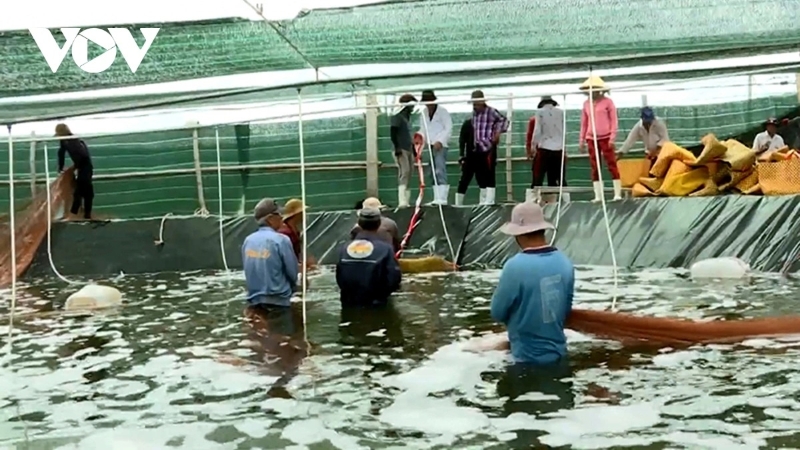Vinh Long to develop $1.5 bln/y fisheries economic zone
With a 130km coastline and a rich system of rivers and canals, Vinh Long province has formed three ecological zones: freshwater, brackish, and saltwater.
The Mekong Delta province of Vinh Long is expanding its aquaculture area, aiming to build a large-scale fisheries economic zone with an estimated annual value $1.5 billion, according to a report by Radio the Voice of Vietnam.
With a 130km coastline and a rich system of rivers and canals, Vinh Long province has formed three ecological zones: freshwater, brackish water, and saltwater.
Currently, the entire province has over 110,000 ha of aquaculture area, with an average annual output of 650,000 tons. Of this, saltwater and brackish water farming accounts for 91,000 ha, mollusks 5,100 ha, and freshwater 14,000 ha. Key farmed species include whiteleg shrimp, black tiger shrimp, pangasius, clams, giant freshwater prawns, and sea crabs.
Notably, the high-tech whiteleg shrimp farming model is generating significant value, actively contributing to the GRDP of the locality. The area for high-tech shrimp farming currently reaches 6,510 ha in 20 coastal communes.
This year, Vinh Long strives to achieve a total aquatic product output of nearly 984,000 tons, with aquaculture accounting for 675,000 tons. In the coming period, the province aims to maintain over 115,000 ha of shrimp farming, double the area for high-tech farming, linked with granting farming area codes, traceability, and meeting export standards.
Director of the Provincial Department of Agriculture and Environment, Mr. Le Van Tan, said: "To achieve the target of $1.5 billion per year, the industry will review farming zone planning, especially investing in infrastructure facilities that meet the needs of shrimp farming in the locality. Secondly, we will apply science and technology, implement technical cultivation measures, and strive to build models that meet safety, clean, and organic standards."
Source: en.vneconomy.vn
Photo: VOV





